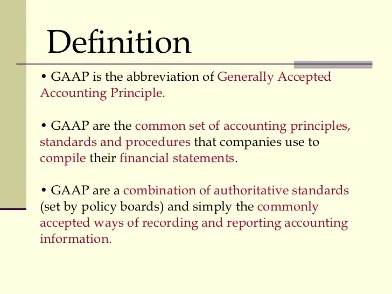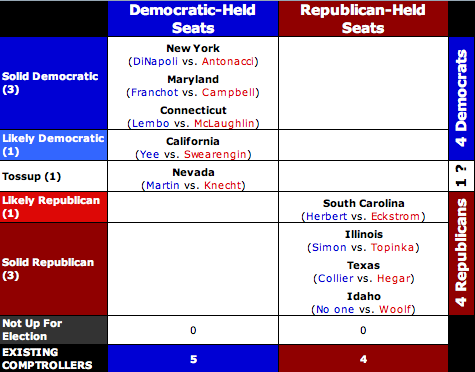
If you’re reconciling an account for the first time, review the opening balance. It needs to match the balance of your real-life bank account for the day you decided to start tracking transactions in QuickBooks. Just like balancing your checkbook, you need to review your accounts in QuickBooks to make sure they match your bank and credit card statements. If you would like to streamline your reconciliation process in QuickBooks, Synder is the answer. Synder is a comprehensive financial management software that specializes in automating accounting processes for businesses, particularly those operating in ecommerce and using online payment platforms. Finally, after identifying and resolving these discrepancies, adjustments are made to the financial statements to reflect the reconciled balance, ensuring accuracy and consistency in the financial records.
Reconcile an Account in QuickBooks Online: Overview
- To return to finish the account reconciliation later, click the “Settings” button and then click the “Reconcile” link under the “Tools” heading in the drop-down menu again.
- Select the appropriate bank or credit card account to reconcile from the Account field.
- Verify the accuracy of all entered information and proceed by selecting Continue or OK.
- This process is essential for maintaining accurate financial information and ensuring that the company’s records are in line with its actual financial position.
- Also, consider timing differences, such as checks that have been issued but not yet cashed, or bank fees that have yet to be recorded in QuickBooks.
By reconciling regularly, businesses can detect and rectify any discrepancies, minimizing the risk of errors and fraudulent activities. This process directly impacts the balance sheet accounts, transactions, and banking activities. It provides a clear and accurate picture of the company’s financial health, enabling informed decision-making.
Reconcile an account in QuickBooks Desktop

Sometimes things get missed – it’s bound to happen every once in a while. For example, if the payee is wrong, you can click on the transaction to expand the view and then select Edit. In cases involving significant or complex issues, it is recommended to seek the assistance of an accounting professional.
When choosing an account to reconcile, ensure it corresponds with the one on your statement. It’s crucial to verify that the beginning balance in QuickBooks Online matches the one in your statement, and any discrepancies should be investigated and rectified. For bank transactions such as deposits, withdrawals, what is unearned revenue definition and meaning and fees, make sure each one is recorded; leveraging the QuickBooks bank feed feature can facilitate easier tracking and recording. Also, any adjustments or manual journal entries that have been made since the last reconciliation need to be accurately documented in the system. If needed, then enter any bank service fees or interest earned into the “Enter the service charge or interest earned, if necessary” section. Enter any bank service fees into the “Service charge” field and then select the date and the account used to track bank service fees from the adjacent “Date” and “Expense account” drop-downs.
Once the matching is complete, and the difference between your bank statement and QuickBooks Desktop shows $0.00, proceed to finalize the reconciliation by selecting Reconcile now. After completing the reconciliation, you have the option to display or print the Reconciliation report for record-keeping. For accounts connected to online banking, confirm that all transactions are accurately matched and categorized. To access the reconciliation tool in QuickBooks Online, navigate to Settings and then select Reconcile. The information you entered from the account statement appears at the top of the page.
Choose the account you’ve reconciled and select the type of report you need, whether it’s detailed, summary, or both. Adjusting transactions in QuickBooks is necessary to rectify any disparities identified during the comparison with the bank statement, ensuring the accurate synchronization of financial records. Regular reviews help in detecting potential errors or fraudulent activities, thereby safeguarding the financial integrity of the business. It also streamlines the reconciliation process, providing a clear and up-to-date financial overview for informed decision-making. From accessing the reconcile tool to marking transactions as cleared, we’ve got you covered.
Tax & Accounting
This process involves meticulously reviewing each transaction entry in QuickBooks and cross-referencing it with the corresponding entry in the bank statement. By performing this comparison, discrepancies such as missing transactions, duplicate entries, or incorrect amounts can be readily identified. This not only helps in maintaining accurate financial records but also serves as a crucial reconciliation step to ensure that the company’s books reflect the true financial position. This process involves comparing the transactions entered into QuickBooks Online with the bank statement to pinpoint any inconsistencies.
Reconciling previous months in QuickBooks Online involves the process of retroactively matching the financial records with the bank statements for specific past periods to ensure comprehensive financial accuracy. Reconciliation is an accounting process used to ensure that two sets of records (usually the balances of two accounts) are in agreement. It is a key step in establishing the accuracy of financial records and is often used to compare the records of a company with external records such as bank statements. This crucial step requires attention to detail and accuracy to certify that all entries, including deposits, withdrawals, and other financial activities, are correctly reflected and reconciled.
When you have your what is public accounting bank statement in hand, you’ll compare each transaction with the ones entered into QuickBooks. We recommend reconciling your checking, savings, and credit card accounts every month. This process plays a crucial role in maintaining the integrity of financial data and safeguarding against discrepancies. By reconciling transactions, users can confidently rely on the accuracy of their financial reports, ensuring that each transaction has been properly accounted for and is consistent with the bank statement.
Reconciling a bank statement in QuickBooks involves a series of steps to ensure that the recorded financial transactions align accurately with the bank statement, reflecting the true financial position. Completing the reconciliation process in QuickBooks Desktop involves finalizing the matching of transactions, ensuring that the financial records align with the bank statement, free bank reconciliation template in excel and concluding the reconciliation task. Completing the reconciliation process in QuickBooks Online involves finalizing the matching of transactions, ensuring that the financial records align with the bank statement, and concluding the reconciliation task. When you reconcile, you compare two related accounts make sure everything is accurate and matches.
